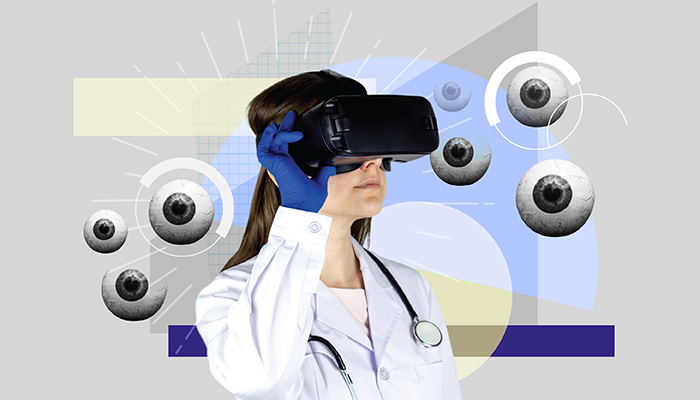
Originally coined in Neal Stephenson’s 1982 science-fiction novel, Snow Crash, to refer to an immersive virtual reality (VR) where characters retreat to escape the drudgery of their totalitarian reality, the term “metaverse” has now entered the everyday lexicon and seems destined to remain there. Stephenson’s novel was oddly prescient – although still in its relative infancy, the metaverse is steadily gaining in popularity. Estimates see the value of the global metaverse market rising from $82 billion in 2023 to an eye-watering $936.6 billion in 2030 (1). E-commerce, gaming, entertainment, education and marketing are all noted as comprising aspects of the metaverse’s commercial attractiveness, with hugely popular multiplayer games like Minecraft, Fortnite, and Roblox showcasing where it is heading.
In addition to these profit-reaping engines, the technology is also making inroads into the medical field. Integrating the technology through their XR Initiative (2), the University of Miami (UM) has introduced the metaverse as a way of modernizing the teaching of a whole range of diverse subjects – architecture, sustainability, art history, behavioral research, and healthcare. UM’s Bascom Palmer Eye Institute has taken full advantage of the initiative, phasing in virtual auditoriums and virtual reality practices to enhance their ophthalmology students’ learning experience. “During the pandemic, Bascom Palmer adopted virtual learning experiences for student training by broadcasting clinical encounters using virtual meeting platforms, smartphones, and smartphone adaptors onto the slit lamp microscopes,” explains Giselle Ricur, ophthalmologist and executive director of virtual healthcare at the institute. “Surgeries were also broadcast and narrated using a similar technique.”
There are many benefits to using VR technology as a teaching tool. Students can overcome the nervousness and lack of confidence associated with performing first-time surgical procedures by working on virtual simulations, for example. But the use of VR to facilitate learning in the metaverse “does not replace or overshadow in-person training,” explains Ricur, “it complements and expands upon it.”
“VR enables students to practice and transfer their skills in a controlled, risk-free environment. They can repeatedly train under various challenging conditions that they may not encounter frequently in real-life scenarios,” adds Ricur. “The immersive nature of VR engages students on a deeper level, fostering active participation and concentration.”
In this immersive environment, students are also able to use a virtual version of the slit lamp. The slit lamp is currently in the development stage, but it will “incorporate 3D images of specific eye conditions,” says Ricur. “This enhancement will enable students to learn how to diagnose common pathologies, such as conjunctivitis, styes, blepharitis, corneal edema, narrow anterior chambers, hypopyon, cataracts, and more.”
However, as with any new technological advancements, there are less beneficial aspects to consider. Ricur notes a number of potential challenges; for example, access/cost, software development expertise, and motion sickness/user tolerance. However, she remains optimistic about the future of VR and the metaverse within medicine. The benefits outweigh the potential problems, she says. “Additionally, with continuous improvements, we can create a more seamless and effective learning environment.”
In fact, says Ricur, “We anticipate the widespread adoption of VR technology not only within ophthalmology, but also across the entire medical landscape... It is therefore crucial for our students to understand this technology and gain hands-on experience with it, as it will be instrumental in ushering in a new frontier of medicine for the benefit of our patients.”
How far other universities will follow in the virtual footsteps of The Bascom Palmer Institute remains to be seen. But Mark Zuckerberg has described the metaverse as “the successor to the mobile internet” (3) – and given his record for predicting the popularity of certain technologies, perhaps its expanding role at the center of modern-day medical teaching practices is inevitable.
References
- Statista, “Metaverse - Statistics and Facts” (2022). Available at: bit.ly/44oi1wu.
- University of Miami, “XR Initiative”. Available at: https://xr.miami.edu/.
- YouTube, “The Metaverse and How We’ll Build It Together – Connect 2021” (2021). Available at: bit.ly/46vibEi.
